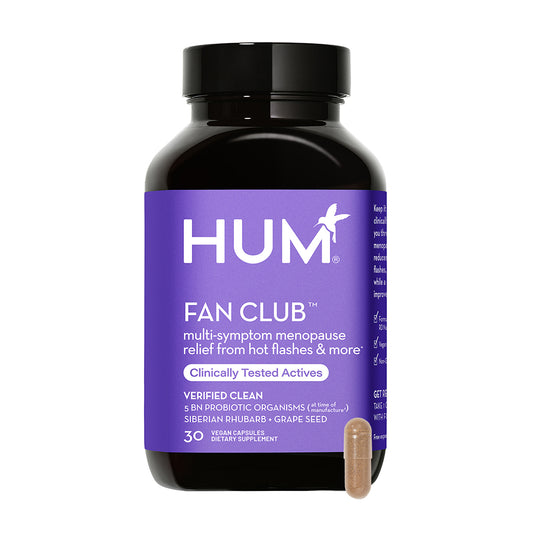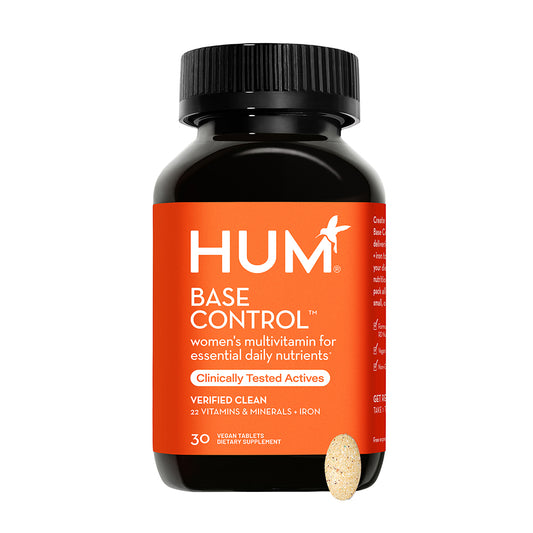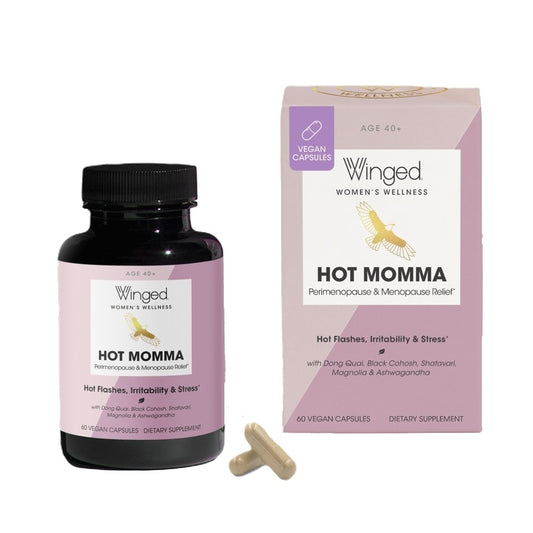You’re eating well, staying active, and doing all the right things — so why is your cholesterol suddenly climbing? If you’re in perimenopause or menopause, you’re not imagining it. This life stage brings more than hot flashes and mood swings — it can also trigger a surprising rise in LDL (bad) cholesterol, even if your lifestyle hasn’t changed.
That shift isn’t just frustrating — it matters. Rising cholesterol during menopause is linked to a higher risk of heart disease, the number one cause of death among women in the U.S. One big reason? A drop in estrogen, which plays a key role in keeping cholesterol levels in check.
But here’s the good news: understanding this connection gives you the power to take action. In this article, we’ll break down what cholesterol really is, how menopause affects it, and the smart steps you can take to protect your heart and stay healthy through this transition — and beyond.
It’s always a good idea to check in with your healthcare provider if you have any questions or concerns. They understand your individual needs and can give you the most appropriate advice.

Cholesterol 101 — What it is and its role in the body
Cholesterol is a waxy, fat-like substance found in blood and every cell of the body. It’s essential for making hormones (like estrogen), vitamin D, and bile acids that help digest fats. While cholesterol is vital, having too much in the bloodstream — especially the wrong kind — can increase your risk of heart disease.
Your liver produces all the cholesterol your body needs. You get additional cholesterol by eating animal-based foods like meat, poultry, and dairy. Certain fats, including trans and saturated fats from fried foods, fatty or processed meats, whole-fat dairy, and palm, palm kernel, and coconut oils, can also increase cholesterol levels in your body.
The different types of cholesterol
When your doctor measures your cholesterol levels through a blood test, or lipid profile, you’ll likely see four main values:
- Total blood cholesterol. The sum of your HDL and LDL cholesterol levels, plus 20% of your triglyceride level.
- Low-density lipoprotein (LDL). Often called “bad cholesterol” because it deposits cholesterol into artery walls, leading to plaque buildup and atherosclerosis.
- High-density lipoprotein (HDL). Known as “good cholesterol” because it helps remove excess cholesterol from the bloodstream and carries it back to the liver for disposal.
- Triglycerides. While not a type of cholesterol, triglycerides are the most common type of fat in the bloodstream. They can raise heart disease risk, especially in females.

What are optimal cholesterol levels during menopause?
Cholesterol recommendations for people in menopause are the same as those at other life stages. When it comes to LDL, lower is better, according to the American Heart Association. Experts recommend aiming for the following cholesterol levels to support heart health:
- Total cholesterol: about 150 mg/dL
- LDL cholesterol: at or below 100 mg/dL for healthy individuals, lower (70 mg/dL or less) for those with a history of heart attack or stroke
- HDL cholesterol: 60 mg/dL or higher
Menopause and cholesterol — What’s the link?
When we think of menopause, we often think of night sweats, disrupted sleep, and brain fog. As if all that wasn’t enough, menopause also affects cholesterol metabolism — and not in a good way. The link between all these symptoms is fluctuating, and ultimately declining, estrogen levels during the menopause transition.
Estrogen can be protective for vascular function and metabolism and has a beneficial effect on cholesterol levels, raising HDL and lowering LDL. So, when estrogen levels drop, the balance shifts, leading to high LDL and lower HDL. This explains why many people experience rising cholesterol levels during the menopause transition even without other lifestyle changes.
Can menopause cause high cholesterol?
Yes — menopause can coincide with changes in cholesterol levels. Total cholesterol, LDL, and apolipoprotein B (a protein that helps transport fats in the bloodstream) levels may increase dramatically during the menopause transition, especially around the final menstrual period.
Studies have found that this transition — not just aging — leads to increased cholesterol levels, blood pressure, and other risk factors like metabolic syndrome and atherosclerosis. While LDL spikes during perimenopause and early postmenopause, it tends to plateau later.

Other contributing factors include:
- Genetics. Family history of high cholesterol or heart disease.
- Weight gain. Common in midlife due to changes in activity and aging.
- Diet and lifestyle. High saturated fat intake, inactivity, and stress.
- Age. Arteries naturally stiffen, increasing risk.
How much does LDL increase during perimenopause?
Studies show LDL cholesterol increases by an average of 18.6% during the menopause transition. If you’re wondering about perimenopause and cholesterol management, it starts with understanding your lipid profile and making lifestyle adjustments.
How to manage high LDL cholesterol during perimenopause and menopause
While we can’t slow down the clock or change our genetics, we can take steps to manage high cholesterol in menopause. Here’s how.
Nutrition for healthy cholesterol levels
Eating a heart-healthy diet rich in vegetables, fruits, whole grains, beans, lean proteins, and healthy fats is extremely important. Soluble fiber from oats, beans, apples, and flaxseeds helps lower LDL. Cutting back on saturated fats from meat and full-fat dairy is also key.
Studies suggest a Mediterranean-style diet can help improve and maintain healthy cholesterol levels and overall health. If you’re still struggling with high LDL cholesterol levels, ask your healthcare provider about foods fortified with plant sterols and stanols, which may help lower LDL cholesterol.

Regular exercise
Find movement you enjoy and stick with it. Exercise helps raise HDL and lower LDL. Aim for 150 minutes of moderate aerobic activity and strength training twice a week. It also supports healthy blood pressure and reduces risk factors for heart disease.
Maintain a healthy weight
Weight gain is common during perimenopause and cholesterol levels often rise with it. Losing just 5-10% of body weight can significantly improve LDL, total cholesterol, and triglycerides.
Plant sterols and stanols
Plant sterols and stanols are natural compounds found in plants that block cholesterol absorption and reabsorption. Some research has shown taking 2-2.5 grams daily may lower LDL by about 10% within several weeks. Trace amounts are found naturally in fruits, vegetables, grains, seeds, and beans, but are found in larger amounts in fortified foods.
Menopause hormone therapy
Wondering does the estrogen patch increase cholesterol? Actually, studies show that menopause hormone therapy (MHT) may help lower LDL and improve your lipid profile when started before age 60 or within 10 years of menopause. However, while they may be a piece of your strategy, they’re not considered treatment for high cholesterol.

Cholesterol-lowering medications
Committing to a healthy lifestyle that incorporates exercise, weight management, smoking cessation, and a heart-healthy diet is the first step towards improving high cholesterol. If lifestyle changes aren’t enough, medications like statins may help. They’re the first-line therapy for lowering LDL and very important medications for those who need them.
Takeaway
Many of us experience rising cholesterol levels during perimenopause and menopause. Fluctuating and declining estrogen levels contribute to this shift, increasing cardiovascular disease risk. But you’re not powerless.
By focusing on heart healthy eating, regular movement, weight management, and medical support when needed, you can take control of your health. Understanding the link between cholesterol and menopause helps you act early, protect your heart, and thrive during this transition and beyond. Focusing on this aspect of your health deserves a spot at the top of your health priorities.
FAQs
Does menopause always cause high cholesterol?
Not always, but it’s common. Estrogen helps keep LDL levels in check, so when estrogen levels drop, cholesterol often rises, even when balanced by lifestyle.
How much does LDL increase in perimenopause?
Studies show LDL cholesterol increases by an average of 18.6% during the menopause transition.
What tips do you have for how to manage a sudden spike in LDL in perimenopause?
Start with lifestyle changes: fiber-rich foods, less saturated fats, regular exercise, and weight management. If your cholesterol remains high despite these efforts, your doctor may recommend medication or discuss whether hormone therapy could help.
Does low estrogen cause high LDL cholesterol?
Yes, a drop in estrogen can lead to increased LDL cholesterol levels. Estrogen plays a role in moving LDL cholesterol out of the bloodstream. So, when estrogen levels fall in perimenopause and menopause, LDL tends to rise.
What diets can I consider to help lower cholesterol during menopause?
The Mediterranean diet — rich in veggies, fruits, legumes, whole grains, nuts, fish, and olive oil — has been shown to be effective at lowering cholesterol levels during the menopause transition. Additionally, replacing saturated fats (from meat and full-fat dairy) with heart-healthy polyunsaturated fats (from fish, avocadoes, and olive oil) and adding soluble fiber (from oats and beans) can significantly lower LDL cholesterol.
Does menopause hormone therapy (MHT) lower cholesterol?
Yes, studies suggest MHT significantly lowers levels of total cholesterol, LDL, and lipoprotein a, especially when it’s started before age 60 or withing 10 years of menopause.
References
American Heart Association. (2024). What is cholesterol? Accessed 9/9/2025 from https://www.heart.org/en/health-topics/cholesterol/about-cholesterol
American Heart Association. (2024). What your cholesterol levels mean. Accessed 9/9/2025 from https://www.heart.org/en/health-topics/cholesterol/about-cholesterol/what-your-cholesterol-levels-mean
Brown, J.D., Buscemi, J., Milsom, V., Malcolm, R., & O’Neil, P.M. (2015). Effects on cardiovascular risk factors of weight losses limited to 5–10. Translational Behavioral Medicine, 6(3): 339-346. doi: 10.1007/S13142-015-0353-9
Cabre, H.E., Woolf, E.K., & Redman, L.M. (2024). Precision nutrition for management of cardiovascular disease risk during menopause. Lifestyle Genomics, 17(1): 93-101. doi: 10.1159/000540337
Clayton, G.L., Borges, M.C., & Lawlor, D.A. (2024). The impact of reproductive factors on the metabolic profile of females from menarche to menopause. Nature Communications, 15(1): 1103. doi: 10.1038/S41467-023-44459-6
Cho, E.J., Min, Y.J., Oh, M.S., Kwon, J.E., Kim, J.E., Lee, W-S., Lee, K.J., Kim, S-W., Kim, T.H., Kim, M-A., Kim, C.J., & Ryu, W.S. (2011). Effects of the transition from premenopause to postmenopause on lipids and lipoproteins: Quantification and related parameters. Korean Journal of Internal Medicine, 26(1): 47-53. doi: 10.3904/KJIM.2011.26.1.47
Currie, H. & Williams, C. (2008). Menopause, cholesterol and cardiovascular disease. US Cardiology Review, 5(1): 12-14. doi: 10.15420/USC.2008.5.1.12
El Khoudary, S.R., Aggarwal, B., Beckie, T.M., Hodis, H.N., Johnson, A.E., Langer, R.D., Limacher, M.C., Manson, J.E., Stefanick, M.L., & Allison, M.A. (2020). Menopause transition and cardiovascular disease risk: Implications for timing of early prevention: A scientific statement from the American Heart Association. Circulation, 142(25): E506-E532. doi: 10.1161/CIR.0000000000000912
Gonçalves, C., Moreira, H., & Santos, R. (2024). Systematic review of mediterranean diet interventions in menopausal women. AIMS Public Health, 11(1): 110-129. doi: 10.3934/PUBLICHEALTH.2024005.
Li, T. & Zhang, L. (2023). Effect of exercise on cardiovascular risk in sedentary postmenopausal women: A systematic review and meta-analysis. Annals of Palliative Medicine, 12(1): 150-162. doi: 10.21037/apm-22-1395.
National Library of Medicine, MedlinePlus. (2025). Cholesterol levels: What you need to know. Accessed 9/9/2025 from https://medlineplus.gov/cholesterollevelswhatyouneedtoknow.html
National Library of Medicine, MedlinePlus. (2024). Facts about saturated fats. Accessed 9/9/2025 from https://medlineplus.gov/ency/patientinstructions/000838.htm
National Library of Medicine, MedlinePlus. (2024). Facts about trans fats. Accessed 9/9/2025 from https://medlineplus.gov/ency/patientinstructions/000786.htm
Nie, G., Yang, X., Wang, Y., Liang, W., Li, X., Luo, Q., Yang, H., Liu, J., Wang, J., Guo, Q., Yu, Q., & Liang, X. (2022). The effects of menopause hormone therapy on lipid profile in postmenopausal women: A systematic review and meta-analysis. Frontiers in Pharmacology, 13: 850815. doi: 10.3389/FPHAR.2022.850815
Schoeneck, M. & Iggman, D. (2021). The effects of foods on LDL cholesterol levels: A systematic review of the accumulated evidence from systematic reviews and meta-analyses of randomized controlled trials. Nutrition, Metabolism and Cardiovascular Diseases, 31(5): 1325-1338. doi: 10.1016/j.numecd.2020.12.032
WHO Guidelines on Physical Activity and Sedentary Behaviour. (2020). Geneva: World Health Organization. RECOMMENDATIONS. Accessed 9/9/2025 from https://www.ncbi.nlm.nih.gov/books/NBK566046/
Links to other parties' articles and websites are provided for convenience only. Kenvue is not responsible for their content.




